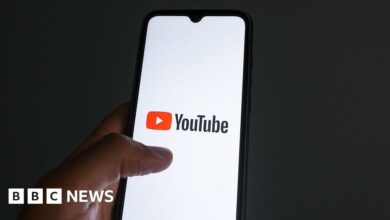Should smartphones be banned for under 16s?
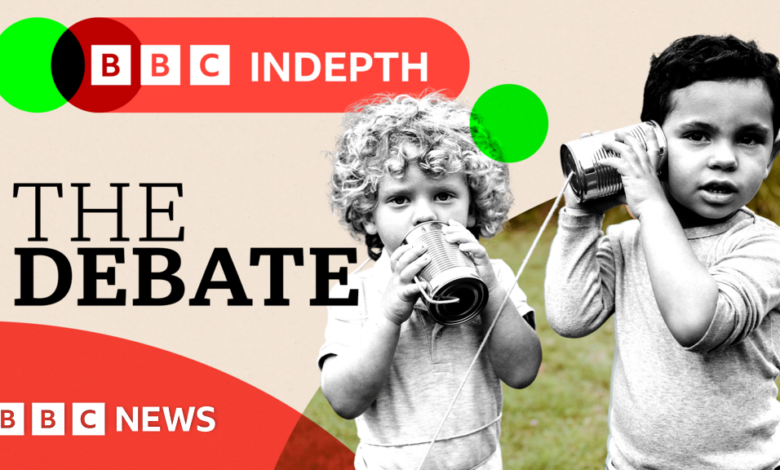
2024-09-29 02:55:14
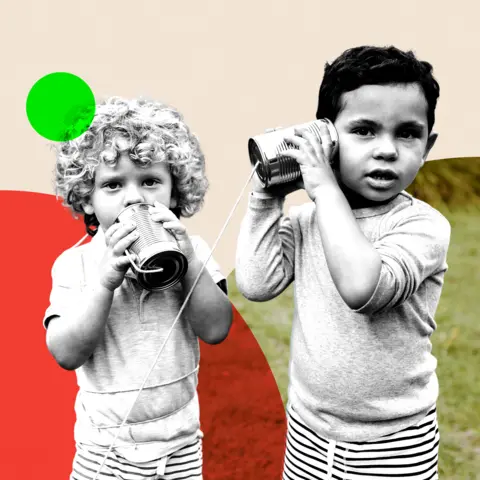 BBC
BBCSmartphones have worked their way deep into our lives and have become indispensable for work and socialising.
Unsurprisingly, many children want them too, but here we are much less sure of the benefits they bring. Many parents worry they are addictive and expose children to inappropriate and harmful content. A growing number think stronger restrictions are needed.
Others suggest some of the risks are overblown. They argue phones provide good opportunities for child development, including socialising, and that the evidence of harm is neither as convincing nor as conclusive as critics suggest.
I hosted a debate on WhatsApp between an academic and a campaigner, focusing on whether there’s a case to be made for stronger restrictions on children’s use of smartphones. What follows is an edited version of their conversation.
Meet the participants
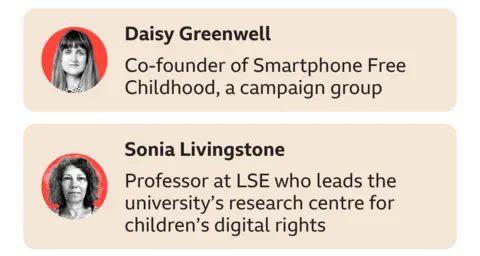
To ban or not to ban?

Daisy Greenwell from Smartphone Free Childhood, a grassroots campaign group against big tech, let’s start with you.
What kind of ban or restrictions do you want and why?

Hi Chris.
Firstly, we think banning is unhelpful framing. We’re not calling for an outright ban on smartphones.
Parents have been put in an impossible position by the tech companies – we either give our kids access to a harmful product (ie a smartphone with unrestricted access to the internet and social media) or go against the cultural grain and risk alienating them from their peer group.
Governments need to do better to help parents and protect young people.
Put simply, we believe that until tech companies can prove that their products are safe for children, children shouldn’t have unrestricted access to them.

What restrictions would you like to see?

We believe there should be default age-appropriate set up of smartphones. Age-verification technology exists – how can it be implemented at a device and content level to ensure children can only access services that are appropriate for them?
Despite the 13+ minimum age requirement for social media, 51% of British children under 13 use it. They should not be on these platforms as they are not safe, so we need to find a way of enforcing that as soon as possible.
We also believe the government should implement a mandatory ban on smartphones in schools, given that only 11% of schools currently have an effective ban, and all the the research proves that they are hugely disruptive for learning, behaviour and lead to serious safeguarding issues.
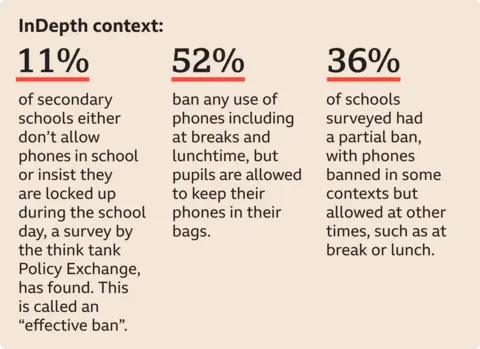

Sonia Livingstone, you’re a social psychologist specialising in how tech affects children’s lives. Does the evidence support what Daisy is saying about the risks?

Hi Daisy.
I think there are several points we could agree on, especially about avoiding the word ‘ban’…
Some points are trickier, though, including the application of age assurance, which is important for high-risk services but care is needed as it has privacy implications for the entire population.
On the question of evidence, it’s a mixed picture. There’s a little evidence supporting restrictions on smartphones in schools. For the rest of children’s lives, we need to consider the positives as well as the negatives of phone use.

Of course I agree and am aware of potential positives of smartphones for children. Wouldn’t it be great if all children could benefit from the upsides of this technology without any of the harms?
Unfortunately we’re a million miles away from that utopia at the moment.
That’s why something needs to change urgently.

Sonia, do you think it’s a mistake for schools to introduce bans?

We’re just reviewing the research now. It’s pretty clear that parents, teachers and students would like clear and effective restrictions on use of phones in class.
The trouble is that we have had a policy of ‘bring your own device’ and of incorporating digital technologies into the classroom for educational purposes.
So I suggest it’s time to review our edtech policy more broadly. This hasn’t been updated since the pandemic, and is currently benefiting big tech and data brokers more than children, according to the evidence.
When we consult children, they agree with some of the risks and problems that Daisy points to.
But they also value their phones, precisely as a way of staying in touch with friends… Our society has cut many of the ways in which children have long been able to play or socialise outside the home.

The network effects of this technology and the sophistication of their addictive design means parents and young people are fighting an impossible battle.
Who should regulate children’s mobile phone use?
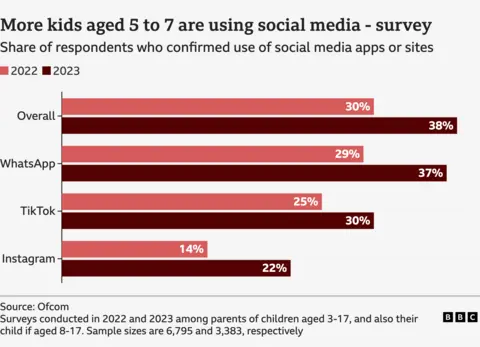

Daisy – it’s hard for a child to buy a phone, and if they have one it’s probably come from mum or dad. Why not just leave it to parents to decide?

It’s totally unfair to put the onus on the parents.

I agree that the burden should be shifted to companies. Not only are they amplifying the harms, but also they refuse to provide more age-appropriate services and a wider diversity of products.

Sonia – are the risks as grave as Daisy suggests? Does the evidence support that?

There’s a case to be made for both risks and benefits; and both appear to be greater for more vulnerable children.
So yes, children need better protections, for sure, and yes, the present situation is problematic for many and dangerous for some.

The entire business model of social media giants is predicated on harvesting as much attention as possible. Smartphones and addictive social media apps have lured children away from the activities that are indispensable to healthy development – outdoor play, face-to-face conversations, sleep.

The question is how to achieve the balance that the public wants between regulation vs education, individual choice vs limits for all.
If we ask: are smartphones bad for children, the evidence suggests yes in some ways, no in others, and it depends on the child and the circumstances.

Yes it’s complicated. You can always find two sides to any academic debate, but we think we need to take a step back and question the societal norm, which is to give children smartphones when they’re younger and younger… Do they need them?

Now it sounds like you are putting the blame on parents, Daisy?

No – we’re saying this is a huge societal issue that needs imagination and bold action.

Moreover, if we ask what the causes of child wellbeing or poor mental health are, technology use is one among many factors – let’s start with poverty, family stress, lack of play and community resource, anxiety about the future…
Are children addicted to smartphones?

Sonia – some researchers have disputed the idea that they are addictive, is there good scientific evidence of that?

I think Daisy has in mind the dark patterns and attention-grabbing incentives built into social media and game design; these certainly have adverse effects.
Clinicians are just careful about ‘addiction’ because alcoholism, drug addiction etc are rather different.
Still, they agree that some 1-3% of the child population meets the threshold for clinical addiction to tech.

What about behavioural addiction?
We all know what addiction to our smartphones feels like… it seems ludicrous to question whether they’re addictive or suggest only 1-3% are.
We know that children are spending four to nine-plus hours a day on these devices.

I’m trying not to be ludicrous, and am happy to offer citations to clinical research.

Daisy – what needs to change, would you increase the age limits on social media for example?

We believe that until social media platforms can prove they are safe for children, children shouldn’t be on them. We’re very interested in what the Australian government is exploring.

All interesting proposals, and as ever, the devil is in the detail. Three questions from me:
1. Is the British public ready for mandatory age verification? They will have to get used to giving up their personal information to companies. Can we trust those companies with such sensitive information?
2. Yes, let’s enforce age limits. But first, let’s debate the right one – 13 is pretty much an accident of the Children’s Online Privacy Protection Act, not a thought-through child-protection policy.

3. How safe should platforms be? As safe as roads? Or swimming pools? And how can we balance risks with opportunities?

On your first question, the public is crying out for something to change. It’s not up to us to figure out the workings of age-verification technology, but we shouldn’t give up because it’s complicated.
To your second question, totally agree, we don’t think 13 is the right age – it’s based on 25-year-old US data law, not child wellbeing – but it is the age at the moment so it should be enforced.

Yes, the public wants change, and rightly so. But sadly, unless we can propose workable solutions, we may find our calls unheeded.

This sounds defeatist – it shouldn’t be on parents to come up with all the policy solutions in what is an incredibly complicated space.

I don’t think it is all on parents. Academics, regulators, civil society, children’s charities, lawyers and technologists are all actively seeking ways forward.

How young is too young to be on social media, Sonia?

I’m afraid I consider that the wrong question. We may need another debate.

Why? It seems a question that nobody wants to answer

OK, let me give it a try.
1. The right age for one child is not right for another.
2. It depends what the child wants to do online.
3. It depends if the child is vulnerable or supported.
4. It depends what digital product or service you are talking about.

Would you apply the same logic to the age of consent?!

That’s yet another debate – am not refusing to answer, but it will take time. Perhaps you have quick answers to big problems, but I like to weigh the evidence.

Daisy – what about Sonia’s third question. We do let children take risks where we think there are rewards too in sport etc.

It’s interesting framing – it certainly shouldn’t be driving kids to suicide, eating disorders, anxiety, depression, etc.

Do children benefit from having smartphones?
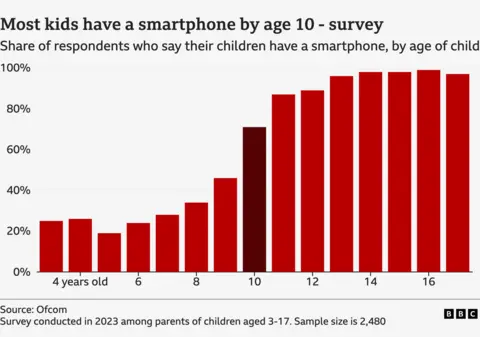

Do you accept, Daisy, that there are benefits to owning these devices and is it right to cut children off from those benefits that adults enjoy?

The upsides of technology are clear… Smartphones are incredibly useful. We carry around all-powerful supercomputers in our pockets that know everything and are connected to everyone, everywhere… They’ve transformed the way we live.
But at what cost? We need to question the assumption that all technological advancement is social progress.
Kids don’t actually need to be connected to the internet 24/7. They don’t need phones for work or to organise diaries etc.
A brick phone can keep them connected to family and friends.

But don’t children need to learn how to use these tools that many adults find essential?

A five-year-old can learn how to use Instagram in about four minutes – that’s really not a valid argument.
Do children need to learn how to have sex before they’re 16, or drive before they’re 17? Both things that will be important to their adult lives.

Also we aren’t saying don’t use tech – just don’t have unrestricted access to the internet in your pocket 24/7.

The thing is, society has involved the internet – typically accessed via a smartphone – in most domains…
So it’s hard to know where to start. One place might be the recent Good Childhood Report. It gives a decent measure of what’s going wrong.

Why shouldn’t children have healthy, intentional, non-addictive relationships with technology that enhances their lives?
We would say the solution starts with people power, not more academic quarrels.

We’re going to wrap up now. Thank you both – it’s been a lively debate.

This debate has demonstrated that even people who agree that tech firms need to do more can disagree passionately over how far we should restrict children’s smartphone use.
The UK government says it has no plans to introduce a smartphone ban for under 16s, and there may be no consensus over how much change is needed, but change is happening nonetheless: tech firms are rolling out new child-safety features, schools are adopting new policies and the technology itself continues to evolve, creating more opportunities and risks.
Disagreement over how we keep children safe online will likely be with us for some time.
BBC InDepth is the new home on the website and app for the best analysis and expertise from our top journalists. Under a distinctive new brand, we’ll bring you fresh perspectives that challenge assumptions, and deep reporting on the biggest issues to help you make sense of a complex world. And we’ll be showcasing thought-provoking content from across BBC Sounds and iPlayer too. We’re starting small but thinking big, and we want to know what you think – you can send us your feedback by clicking on the button below.



